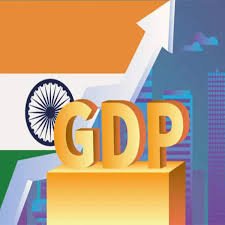India’s GDP growth fell to 5.4% in the July-September quarter of 2024, marking a seven-quarter low. This decline follows 6.7% growth in the previous quarter and 8.1% during the same period in 2023, raising concerns about the trajectory of Asia’s third-largest economy. The slowdown has brought a mix of challenges and opportunities for policymakers, industries, and investors.
Factors Contributing to the Slowdown
1. Weak Manufacturing Sector Performance
The manufacturing sector, a cornerstone of India’s economy, recorded only 2.2% growth, significantly down from 7% in the previous quarter and a remarkable 14.3% a year ago. Analysts attribute this decline to several factors:
- Rising Input Costs: High prices for raw materials and energy have eroded profit margins.
- Reduced Consumer Demand: Sluggish urban spending and cautious rural consumption have dented manufacturing output.
- Global Supply Chain Issues: Lingering disruptions from geopolitical tensions and post-pandemic recovery have affected production schedules.
2. Contraction in Mining and Quarrying
The mining sector, which posted a robust 7.2% growth in the April-June quarter, shrank by 0.1% in the July-September period.
- Adverse Weather: Extended rainfall during the monsoon disrupted mining activities.
- Global Commodity Prices: Fluctuations in demand for key exports like coal and iron ore added to the challenges.
3. Moderation in Investment Demand
A decline in investment demand, traditionally a driver of economic growth, has raised concerns.
- Government Capital Expenditure: Reduced spending by 15% in the first half of FY25 compared to FY24 exacerbated the slowdown.
- Private Sector Hesitation: High borrowing costs and global uncertainties have discouraged private investments.
Sectoral Bright Spots Amid the Slowdown
Despite the overarching economic challenges, some sectors showed resilience:
Agriculture
Agriculture grew by 3.5%, benefiting from favorable monsoon conditions. The sector remains a vital support for rural livelihoods and demand.
Construction
The construction industry posted a steady 7.7% growth. Government infrastructure projects and urban housing demand continue to support this sector.
Information Technology (IT)
Driven by increased digital adoption and export demand, IT companies have maintained strong growth.
Pharmaceuticals
With expanding capacities post-pandemic and rising healthcare needs, the pharmaceutical sector is poised for sustained growth.
Implications for the Indian Economy
1. Policy Adjustments by the RBI
The slowdown could push the Reserve Bank of India (RBI) toward accommodative measures to stimulate growth.
- Interest Rates: While a rate cut appears unlikely due to persistent inflation (currently at 6.2%), a reduction in the Cash Reserve Ratio (CRR) to boost liquidity is being considered.
- Targeted Support: Sectors like manufacturing and MSMEs may benefit from credit schemes.
2. Fiscal Measures
The government may need to step up capital expenditure in infrastructure and social programs to offset the private sector’s hesitancy.
3. Job Market Challenges
The slowdown in manufacturing and investment has implications for job creation, especially in labor-intensive industries like textiles and automotive. Addressing skill gaps and promoting employment in resilient sectors will be critical.
Future Growth Prospects
Revised Growth Projections
The disappointing GDP numbers have led to downward revisions in growth forecasts for FY25:
- S&P Global: Reduced estimates to 6.7% for FY26 and 6.8% for FY27.
- Analysts’ Consensus: Growth may average between 6.5% and 6.8% for FY25, contingent on policy interventions.
Drivers of Recovery
Economists see potential for a rebound in the second half of FY25:
- Public Spending: Increased government expenditure, particularly in infrastructure, could stimulate economic activity.
- Rural Demand Recovery: A strong kharif harvest may boost rural consumption.
- Global Trade Stabilization: Easing of geopolitical tensions could revive export demand.
Strategic Insights for Key Stakeholders
Businesses
- Diversification: Companies should explore emerging sectors like renewable energy and digital services to mitigate risks.
- Cost Optimization: Adopting efficient technologies and practices can offset rising input costs.
Investors
- Sectoral Opportunities: Pharmaceuticals, IT, and infrastructure remain attractive for long-term investments.
- Risk Management: Diversifying portfolios across defensive and high-growth sectors can reduce volatility exposure.
Policymakers
- Regulatory Reforms: Simplifying tax structures and reducing red tape can support business growth.
- Skilling Initiatives: Bridging the gap between workforce capabilities and industry requirements is crucial for sustained industrial growth.
Global Perspective
India’s slowdown is reflective of broader global challenges, including inflationary pressures, energy crises, and geopolitical uncertainties. As a major emerging market, India’s growth trajectory will have significant implications for global trade and investment flows.
Social Impact
The slowdown could exacerbate income inequality, particularly if job creation remains sluggish. Strengthening social safety nets and improving access to education and healthcare will be critical to maintaining social stability.
India’s GDP slowdown to 5.4% in Q2 2024 highlights the complex interplay of domestic and global economic challenges. While the deceleration raises immediate concerns, the resilience of certain sectors and targeted policy measures provide avenues for recovery. By prioritizing structural reforms, fostering innovation, and investing in human capital, India can navigate this challenging phase and chart a path toward sustainable growth in the years ahead.
| Sector | Key Trends | Recent Performance |
| Healthcare | Inelastic demand; essential services | Strong during downturns |
| Information Technology | Growth in digital services and cybersecurity | Resilient performance |
| Real Estate | Demand for specific REITs; 5G rollout | High returns over recent years |
| Consumer Staples | Essential goods remain in demand | Consistent performance |
| Automobile | Recovery driven by income growth and urbanization | Positive outlook |
| Pharmaceuticals | Expansion post-pandemic; increasing healthcare needs | Expected growth |
| Infrastructure | Government focus on development | Promising potential |



